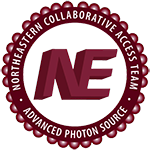Publications
(2009) Crystal structures of human SIRT3 displaying substrate-induced conformational changes. J Biol Chem. 284, 24394-405
(2009) Crystal structures of human SIRT3 displaying substrate-induced conformational changes. J Biol Chem. 284, 24394-405
(2009) Haematopoietic malignancies caused by dysregulation of a chromatin-binding PHD finger. Nature. 459, 847-51
(2009) Haematopoietic malignancies caused by dysregulation of a chromatin-binding PHD finger. Nature. 459, 847-51
(2009) How the MccB bacterial ancestor of ubiquitin E1 initiates biosynthesis of the microcin C7 antibiotic. EMBO J. 28, 1953-64
(2009) Insights into anaphase promoting complex TPR subdomain assembly from a CDC26-APC6 structure. Nat Struct Mol Biol. 16, 987-9
(2009) Insights into MHC class I peptide loading from the structure of the tapasin-ERp57 thiol oxidoreductase heterodimer. Immunity. 30, 21-32
(2009) Ligand recognition by A-class Eph receptors: crystal structures of the EphA2 ligand-binding domain and the EphA2/ephrin-A1 complex. EMBO Rep. 10, 722-8
(2009) The molecular basis for the regulation of the cap-binding complex by the importins. Nat Struct Mol Biol. 16, 930-7
(2009) Molecular mechanism of membrane constriction and tubulation mediated by the F-BAR protein Pacsin/Syndapin. Proc Natl Acad Sci U S A. 106, 12700-5
(2009) Nucleation, propagation and cleavage of target RNAs in Ago silencing complexes. Nature. 461, 754-61
(2009) Nucleation, propagation and cleavage of target RNAs in Ago silencing complexes. Nature. 461, 754-61
(2009) Similar energetic contributions of packing in the core of membrane and water-soluble proteins. J Am Chem Soc. 131, 10846-7
(2009) Structural analysis of an open active site conformation of nonheme iron halogenase CytC3. J Am Chem Soc. 131, 4872-9
(2009) Structural analysis of an open active site conformation of nonheme iron halogenase CytC3. J Am Chem Soc. 131, 4872-9
(2009) Structural analysis of fish versus mammalian hemoglobins: effect of the heme pocket environment on autooxidation and hemin loss. Proteins. 75, 217-30
(2009) Structural and functional analyses of minimal phosphopeptides targeting the polo-box domain of polo-like kinase 1. Nat Struct Mol Biol. 16, 876-82
(2009) Structure of apo-CAP reveals that large conformational changes are necessary for DNA binding. Proc Natl Acad Sci U S A. 106, 16604-9
(2009) Structures of SPOP-substrate complexes: insights into molecular architectures of BTB-Cul3 ubiquitin ligases. Mol Cell. 36, 39-50
(2009) Structures of SPOP-substrate complexes: insights into molecular architectures of BTB-Cul3 ubiquitin ligases. Mol Cell. 36, 39-50

